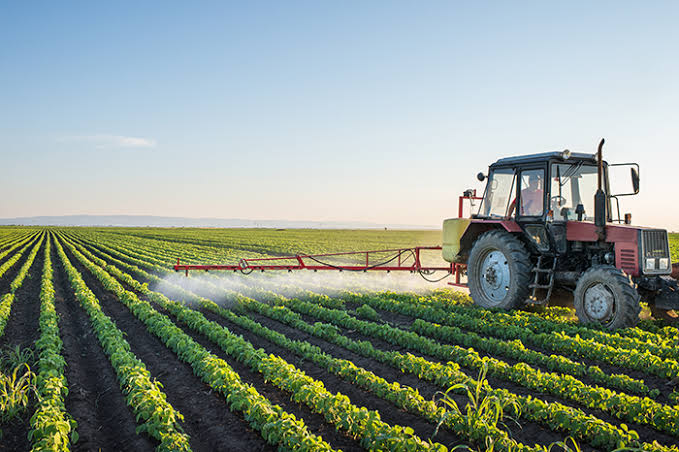Canada, with its vast and diverse landscapes, has long benefited from strong agricultural productivity. From the Prairie Provinces known for grain and oilseed farming to the fruit and dairy-rich regions of British Columbia and Ontario, agriculture plays a critical role in both the economy and food supply. However, climate change is increasingly becoming a serious challenge to this sector.
As of July 2025, shifting weather patterns, rising average temperatures, and more frequent extreme weather events are altering the conditions in which Canadian farmers operate. While some regions may experience longer growing seasons and new crop opportunities, others are facing decreased productivity, increased pest pressure, and soil degradation.
Changing Temperature and Precipitation Patterns
One of the most noticeable effects of climate change is the rise in average temperatures across Canada. Warmer weather can lengthen the growing season, especially in northern regions previously considered too cold for agriculture. This could allow the cultivation of new crops, such as corn or soybeans, in areas like northern Alberta or parts of the Yukon.
However, increased heat also brings challenges. Crops become more vulnerable to heat stress, especially during flowering periods, reducing yields. Livestock are also affected by prolonged heat waves, which can result in reduced milk production, fertility problems, and increased mortality.
Precipitation patterns are becoming more erratic as well. Some regions are experiencing droughts more frequently, such as the Prairies, which heavily rely on rainfall for crop success. Meanwhile, others are seeing excessive rainfall, leading to flooding, waterlogging of crops, and delayed planting or harvesting.
Impact on Crop Production and Yields
Different crops respond differently to climatic changes. For instance, wheat and barley are relatively resilient to moderate heat, but excessive dryness or unseasonable frost can severely damage yields. Conversely, heat-sensitive crops like canola are facing reduced germination rates and premature bolting.
Moreover, changes in climate affect the quality of crops, not just quantity. For example, higher night-time temperatures can lead to lower grain quality in cereals and reduced sugar content in fruits. Wine producers in regions like Niagara are noticing how warmer nights are affecting grape maturation and the taste profile of their products.
Additionally, increased weather unpredictability means that farmers must adapt quickly to sudden frosts, hailstorms, or extended dry periods. These unpredictable events can destroy months of work in just a few hours.
Pests, Diseases, and Invasive Species
Warmer climates support the survival and spread of pests and diseases that previously couldn’t thrive in Canadian conditions. For example, the range of the corn earworm, a major pest in the U.S., has extended further into southern Canada due to warmer winters.
Ticks and other disease-carrying vectors are also becoming more common, affecting both livestock and human health. Fungal diseases like fusarium head blight in wheat are increasing in frequency due to humid and warm conditions, reducing crop quality and posing health concerns due to mycotoxins.
Invasive plant species, such as wild parsnip and leafy spurge, are also spreading due to milder winters and longer growing seasons, competing with crops and reducing land usability.
Soil Health and Water Resources
Climate change is influencing soil quality in a number of ways. More frequent heavy rains contribute to soil erosion, washing away topsoil critical for plant growth. Droughts, on the other hand, reduce soil moisture, hinder microbial activity, and increase salinity levels—making it harder to grow crops.
Access to water for irrigation is also becoming less reliable. In British Columbia and Alberta, glacial meltwater is decreasing, and snowpacks are melting earlier in the season. This disrupts water availability during the hot summer months, when crops need it the most.
Adaptation Strategies in Canadian Agriculture
To counter the effects of climate change, Canadian farmers and agricultural policymakers are exploring and implementing a range of adaptation strategies:
- Crop diversification – Growing a variety of crops reduces risk from specific climate threats and helps maintain income.
- Drought-resistant varieties – Scientists are developing and promoting heat- and drought-tolerant crop strains.
- Conservation tillage – Minimizing soil disturbance helps retain moisture and prevent erosion.
- Efficient irrigation systems – Technologies like drip irrigation and soil moisture sensors reduce water use and increase precision.
- Integrated pest management – Monitoring and managing pests with biological and environmentally safe methods is becoming a priority.
Government and provincial support, through programs like the Canadian Agricultural Partnership (CAP), have also increased funding for research and climate-smart farming initiatives.
Economic and Social Implications
The economic impact of climate change on agriculture is significant. Reduced yields and increased crop losses lead to higher food prices and less reliable incomes for farmers. Insurance claims for crop damage are rising, adding pressure to the agricultural financial system.
Rural communities that rely heavily on farming are especially vulnerable. Changes in viability of certain crops may lead to economic migration or loss of generational farms. Furthermore, mental health stress among farmers is growing, as they struggle to keep up with the unpredictability of weather and market conditions.
Future Outlook and Conclusion
Canada’s agricultural sector is at a critical point. Climate change is both a threat and an opportunity. While it is already causing disruptions to traditional farming methods and yields, it also opens new avenues for innovation and crop exploration in previously unsuitable regions.
Ongoing investment in research, better forecasting tools, infrastructure upgrades, and collaboration among farmers, governments, and scientists will be essential. With proactive adaptation strategies and sustainable farming practices, Canada can mitigate some of the worst impacts and maintain its agricultural resilience in the face of a changing climate.




Nice